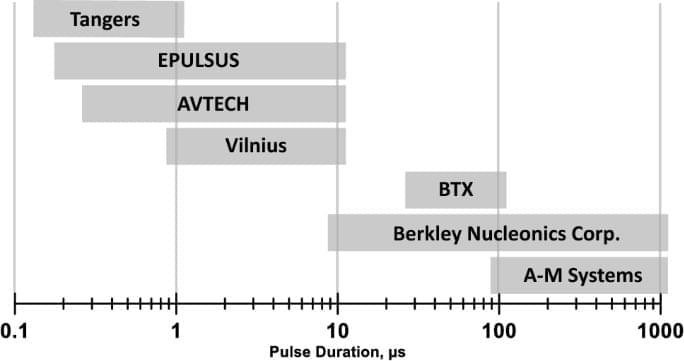All strength-duration curves expectedly climbed as pulse duration decreased (Fig. 9 A). The nerve stimulation thresholds rose much faster (similar to findings with H-FIRE17), thereby decreasing the ratio of cell killing and excitation thresholds for shorter pulses (Fig. 9 B). Nanosecond pulses showed a profound and unequivocal advantage over conventional 100-µs pulses: The ratio of cell killing and excitation thresholds dropped from as high as 500 for unipolar 100-µs pulses to 13 for unipolar 150-ns pulses. Engaging bipolar cancellation further decreased this ratio to only 4 for bipolar 150 ns pulses (Fig. 9 B). Thus, bipolar nanosecond pulses are the best choice for the reduction of neuromuscular stimulation from PEF ablation.
The stimulation boundaries for ablation with different pulse durations and shapes are illustrated by a hypothetical example in Fig. 10. Based on data in Fig. 9 and numerical simulations of the electric field distribution, we explored how far electrostimulation will reach from an ablation area. A tumor 0.7 cm in diameter was placed between two needle electrodes (0.5-cm diameter, 1.7-cm center-to-center distance) for ablation by PEF, and 300 pulses were delivered at the minimum amplitude needed for tumor ablation. Nerve stimulation occurred within a range of about 2 cm for bipolar 200-ns pulses, but as far as 20 cm away for unipolar 100-µs pulses.
